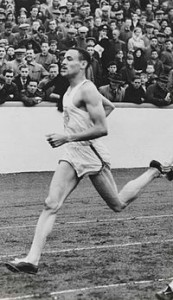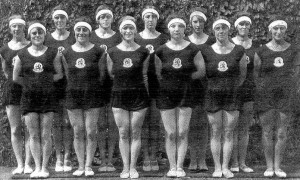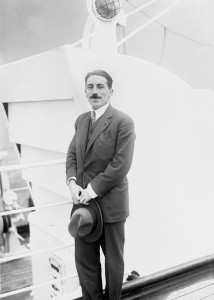In November, it was announced that no Bulgarian weightlifters will compete at the Rio 2016 Olympics, as a punishment for an excessive amount of doping positives among Bulgarian lifters. Such a suspension is not unique, but – fortunately – still relatively rare. We’ll take a look at other exclusions in Olympic history.
Just look at Bulgaria’s Olympic weightlifting history already reveals a few similar cases. In 1988, the team withdrew after two gold medallists (Mitko Grabnev and Angel Genchev) had tested positive for doping. Twelve years later, three Bulgarian medallists, including gold medallist Izabela Dragneva, were caught with performance enhancing drugs, which was followed by a suspension of the rest of the weightlifting team. In 2008, Bulgaria chose not to compete in the Olympics, with no less than 11 national team members facing doping suspensions in the run-up to the Games. Those low points are now followed by a suspension ahead of the Games.
One of the players in Bulgaria’s tainted Olympic weightlifting past: Izabela Dragneva.
Another group of athletes possibly facing suspension are the Russian track and field athletes. Following a recent report by WADA, the International Assocation of Athletics Federations (IAAF) has supended Russian athletes from competing internationally. Depending on how quick they can reform, they may also miss the Rio de Janeiro Olympics.
A similar exclusion came in 1988, when Mexico was banned by the international football federation (FIFA), after they were found to have knowingly used at least four players over the age limit in an U20 tournament. All Mexican representative teams were banned for a period of two years, including the Olympic team that had already qualified for Seoul. They were replaced by Guatemala.
Another age-related suspension was handed out in 2010 by the International Gymnastics Federation (FIG). In gymnastics, there is a minimum age for competitors, and North Korea was found to have submitted false birth dates for at least two competitors. They were suspended from international competition for two years, which included the 2012 London Games.
In the past, it has happened several times that nations were not allowed to compete at the Olympics. The first such occasion came in 1920. Despite the fact that Olympic renovator Pierre de Coubertin was not in favor, the (perceived) aggressors of World War I – Austria, Germany, Hungary and Turkey – were not invited. The Germans were not invited in 1924 either, leaving them to return on the Olympic podium only in St. Moritz 1928. Twenty years later, Germany could also not enter the Olympics. Following World War II, the country had been divided by the four allied nations, and the German National Olympic Committee therefore did not formally represent any recognized nation. However, Japan was not allowed to compete in the 1948 Games either, suggestion this formal reason might merely have been an excuse to not invite the war aggressors.
Activist Dennis Brutus campaigned for Apartheid-era South Africa to be banned from the Olympics – with eventual success.
The 1964 Olympics were marked by the suspension of the South African NOC, a year earlier. The South African NOC did not allow mixed-race competition, which was in conflict with the IOC’s non-discrimination policies. In 1970, South Africa was expelled from the International Olympic Committee and only reinstated in 1992. A similar fate befell Rhodesia – present-day Zimbabwe – when its invitation for the 1972 Olympics was revoked shortly before the opening ceremony, and the NOC was suspended. Most African nations did not recognize the (white) Ian Smith regime, and threatened to boycott the Munich Games if the nation were allowed to compete. Rhodesian athletes had already missed the 1968 Olympics when strict interpretation of passport rules meant they could not enter Mexico. Competitors from Taiwan suffered from the same issue in 1976, when they were unable to enter Canada.
Following the break-up of Yugoslavia in the early 1990s, a United Nations resolution prohibited teams representing that country at sports events. Individual athletes were allowed to compete, and so the IOC created Individual Olympic Participants, allowing such athletes to take part in Barcelona 1992.
In 1999, the Taliban-ruled Afghanistan was suspended from competition, among others for not allowing women to compete in sports. As of 2012, four Afghan women have competed in the Olympics.
In more recent years, several National Olympic Committees have been suspended by the IOC for not abiding by the rules of the Olympic Charter. Frequently, this concerns government intervention in the NOC, but there may be other reasons. Such suspensions include:
- Venezuela in 1993
- Iraq in 2003-2004
- Panama in 2007-2008
- Kuwait in 2010-2012 and again in 2015-present
- Ghana in 2011
Two such suspensions had effects on a nation’s participation in the Olympics. Afghanistan was banned in 1999, causing them to miss the 2000 Olympics – although the Taliban probably couldn’t care less. In 2013, India was also suspended, forcing one of its athletes to compete as an Individual Olympic Athlete during the first week of the 2014 Sochi Winter Olympics. The suspension was lifted during the second week, allowing the remaining two competitors to contest their events under the Indian flag.
Luger Shiva Keshavan was forced to compete as an independent athlete in Sochi 2014, as his nation’s NOC (India) had been suspended.
Back in 1962, the Indonesian NOC had also been suspended by the IOC, as they had refused to allow athletes from Taiwan and Israel compete in the Asian Games. Angered by the fact that France and the US (which had refused to allow competitors from East Germany) were not suspended, Indonesian President Sukarno created the Games of the New Emerging Forces (GANEFO). Held in 1963, the IOC banned all athletes that had competed at these Games, which caused Indonesia and North Korea to withdraw from the Tokyo Olympics, even if they were allowed to enter athletes who hadn’t contested the GANEFO. North Korea competed again in the second (and last) edition of the GANEFO (1966), which meant they were suspended by the IOC, causing the nation to miss the 1968 Olympics as well.
[table]
Year,Country,Reason
1920,Germany, Not invited as WWI aggressor nation
1920,Austria, Not invited as WWI aggressor nation
1920,Hungary, Not invited as WWI aggressor nation
1920,Turkey, Not invited as WWI aggressor nation
1924,Germany, Not invited as WWI aggressor nation
1948, Germany, Not invited as WWII aggressor nation (no formal NOC)
1948, Japan, Not invited as WWII aggressor nation
1964, South Africa, Suspended by IOC
1968, North Korea, Suspended by IOC
1968, South Africa, Suspended by IOC
1968, Rhodesia, Could not enter host nation
1972, Rhodesia, Invitation revoked
1976, Rhodesia, Suspended by IOC
1976, Taiwan, Could not enter host nation
1988,Mexico (football), Suspended by IF
2000, Afghanistan, Suspended by IOC
2012, North Korea (gymnastics), Suspended by IF
2014, India, Suspended by IOC
2016, Bulgaria (weightlifting), Suspended by IF
[/table]


